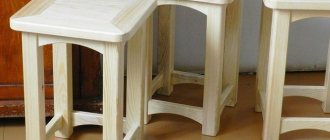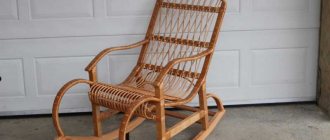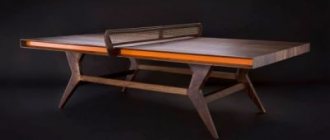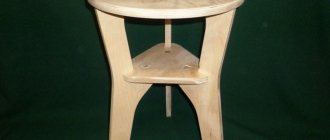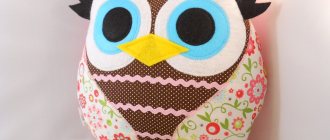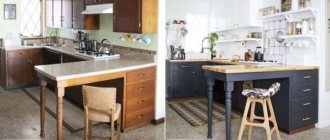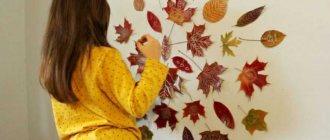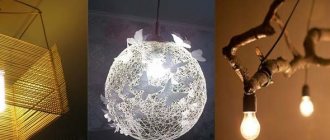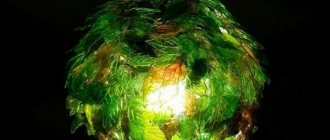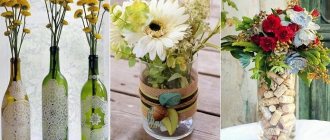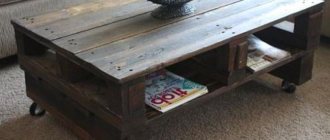Sewing a bedspread with your own hands is not only a way to save on a factory product, but also an opportunity to bring a piece of your soul into the interior. A bedroom is a place where a person spends a significant part of his life, so it is important to make this space as comfortable as possible for relaxation.
Any textile products create an extraordinary atmosphere of comfort in the room; making them yourself using detailed instructions is very simple. Today we will talk about how to create a bedspread.
DIY bedspread
The meaning of the bedspread
It is not always possible to purchase bed linen that would fit into a lovingly created interior. A blanket will help cover such a discrepancy. Moreover, it will not cause any special problems in manufacturing, and the necessary fabric is still easier to find than bed linen.
The bedspread will give the room additional coziness and comfort.
Such an item will not only beautifully complete the decoration of the bedroom, but will also reliably protect the bed linen from dirt, dust, abrasion, and help it stay fresh for a longer period of time.
There are also throw blankets that can be used for napping. In this case, the bed is not spread out, wrapped in a cozy blanket.
Professional approach
In modern interior design, there are several bed making schemes. In all cases, the fashion trend is multi-layering and an abundance of multi-format (often decorative) pillows. The schemes include some elements that are unusual to us, but widespread in Europe and America; The following elements may be present:
- Bed valance (skirt). An optional detail, which, however, makes the room more comfortable. It has a second, utilitarian function - it hides the space under the bed where things are often stored. The skirt is placed on the spring base of the bed, evenly distributed around the perimeter.
Bed valance Source madrasahhebat.com
- Mattress cover. It matches the size of the mattress and fits tightly onto it. A useful element that protects the mattress from dirt; You can't feel it from the outside, but it helps in rearranging the sheets. Some models have down filling and are practical in cold regions. There are options for hot climates that help remove heat from the bed.
Mattress pad Source adaziaire.club
- The sheet has an elastic band. A very convenient invention - there will be no wrinkles or bumps on the bed. If desired, you can lay a regular sheet on top (although you will have to fold the corners in a special way, “hospital corners”) or a second one with an elastic band.
- Decorative fold. The edge at the foot is often folded under the mattress, so the hanging sides look neater. To create a layered effect, the edge of the bedspread and sheets at the head are folded back, highlighting an area for pillows. Sometimes the top edge is bent and folded two or three times to increase the effect.
With lapel Source secure.img2-fg.wfcdn.com
- Additional details. The bed is decorated with an additional beautiful blanket (knitted or quilted), folded lengthwise and placed at the foot of the bed. The decorative element can be laid out like a main blanket and the edges folded back together.
In ethnic style Source www.margaret-wright.com
- Pillows. Large pillows for sleeping (as a rule, their pillowcases are made of natural fabrics) are placed directly at the head of the bed. Decorative items are placed in plain sight, in front of the main ones. They are made from a variety of materials and decorated with embroidery, prints, fur inserts, and sequins.
- Foot of the bed. Here you can often see a banquette, chest, pouf or bench. During sleep, the bedspread and decorative pillows are removed here.
In black and lilac colors Source lifeofanotherleague.com
Textile
The most optimal fabric for creating a warm, homey bedspread is wool. However, it is too expensive and heavy.
It will be much cheaper to use mixed wool. It is lighter and easier to care for and comes in a variety of shades.
Bright acrylic practically does not shrink during washing; its fluffiness and lightness will create a playful, joyful mood in the bedroom.
Tapestry is a dense and heavy fabric, which will be difficult for a novice craftswoman to handle. But it is perfect for a classic bedroom. Just as luxurious and a little old-fashioned.
Velvet will look no less luxurious, but with frequent use it will quickly lose its original attractiveness.
Cotton fabrics are the ideal material to start your creativity. They are thin, light and comfortable, practically do not crumble or stretch.
Viscose behaves approximately the same way, but after washing the bedspread may shrink.
Note!
DIY feeder - step-by-step instructions for creating a feeder + detailed diagrams with photo reviews- Do-it-yourself rugs - TOP 120 simple patterns with master classes on how to make them yourself + photo reviews of finished rugs
Do-it-yourself dolls: a master class on making a beautiful doll. Simple instructions with photo examples of ready-made options
Elegant and lightweight silk is suitable for creating almost any interior. But due to the smoothness of the material, it is difficult to sew; it constantly strives to slide off the cutting table and the stand of the sewing machine.
Faux fur will give the room additional volume.
Yarn
Lately, knitted bedspreads and blankets have become especially popular. Soft and comfortable, they allow you to fill the interior with an atmosphere of real home warmth and comfort. But sometimes it happens that after washing the product may shrink or its size was initially chosen incorrectly. The ability to knit and a creative approach to solving the problem will help correct the situation. All you need: knitting needles or a hook of a suitable diameter and yarn of appropriate density. To lengthen the product, you can use a thread of an identical shade and simply knit the required number of rows. If there is no such yarn, you can show your imagination by using a thread of a different shade (contrasting or similar in tone) and add an equal number of rows above and below. When it is necessary to increase the cover along the entire perimeter, it is better to use a hook.
Bedspread models
The simplest bedspread is a regular piece of fabric with finished edges. It’s not difficult to make, and you don’t need a special pattern.
It will be a little more difficult to make a bedspread with ruffles, puffs or flounces.
An unusual double-sided bedspread will help you quickly change the design of your bedroom.
Note!
DIY satin ribbon bows - step-by-step instructions for creating unusual bows + detailed diagrams with photos- Do-it-yourself furniture restoration: step-by-step master classes on restoration at home (120 photo ideas)
Do-it-yourself rack: step-by-step instructions with photos and descriptions on how to make an unusual rack
A lightweight blanket will look great in the summer heat, but a more durable product with a lining and inner layer is more suitable for the cold season, as well as a quilted version.
Decor
As design elements you can use regular or figured stitches, ribbons, bows, tassels, cords, frills, embroidery, appliqués. Most of the decor is placed around the perimeter and bottom of the product so that they do not interfere with lying or sitting. An exception is made for stitching, appliqué, and embroidery.
Light folds at the bottom of the bedspread are designed to beautifully decorate the frame and legs of the bed.
At the same time, when selecting decorative elements, they take into account the style of the bedroom, the color scheme and their own preferences.
Style
As mentioned just above, modern style gives preference to certain colors and textures. For example, Scandinavian trends are characterized by the use of fur and wool.
The color scheme is rich in white. Bright shades are included as small accents. These can be thin stripes, amorphous figures, etc. A prerequisite is that all this diversity must be surrounded by a large number of white shades. Like fruit pieces in yogurt.
Provence and Mediterranean style are a combination of blue, green, and gray. These are all kinds of shades of the sea. Mixed with bright sun, sand, citrus fruits and delicate green meadows.
Africa can be different. But it is always bright and unforgettable. It is the color of ocher, clay, spice and savanna. As for textiles, they are predominantly in bright colors. Although, you can also find examples of calm tones that can be obtained with natural dyeing. These are muted shades of green and brown. White textiles are not welcome because they are considered mournful.
The Moroccan direction is especially interesting. It is characterized by elegant textile patterns inspired by Muslim tradition.
Technological directions of design, despite their asceticism, still give preference to natural fabrics. However, synthetics can be used, and sometimes necessary.
Shabby Chic is the kingdom of roses, frills, lush folds and ruffles. Delicate pastel colors will come in handy here.
Whatever style the room is designed in, the bedspread serves as a key element that unites all other parts into one harmonious picture.
Color spectrum
Most often, the material for the future creation is selected to match the existing textiles; usually it is made in the same color scheme as the curtains. But there are exceptions to this rule, when a blanket on sofa cushions or a bed becomes a contrasting accent spot.
In a dark room, preference is given to soft light shades. For a bright room, you can use any suitable colors.
Note!
- Corrugated paper flowers: TOP 100 photos of ready-made options + instructions on how to make them yourself
- DIY family tree: instructions for creating a family tree + DIY design ideas
- Do-it-yourself sun lounger: photos with instructions for creating sun loungers + detailed diagrams of the stages of work
The brightness and multicolored tints are more suitable for large bedrooms, and warm colors will make the room much more comfortable.
For a colorful bedroom decoration, choose a calm, monochromatic bedspread, but an overly calm room will be enlivened by a cape with a pattern.
How to choose a color?
The choice of a particular color of the bedspread is influenced by the following nuances:
- If we are talking about a classic interior, then you need to choose a bedspread that matches the color of the curtains or wallpaper. For less austere interiors, you should choose colors that are basically present in the room - the bedspread can be in harmony with the color of the lampshade, flower pots, and carpet.
- The design in which the bedspread is combined with the walls looks quite interesting. So, if the walls have light green wallpaper, then you can choose fabric in the trendy mint color.
- You are allowed to choose a blanket to match the color of the furniture set. This is especially suitable in cases where the bed has a voluminous decorative headboard.
- To decorate a room, you can choose shades from one palette. So, if the curtains, wallpaper and other elements in the room are light pink, then you can choose bright crimson fabric for the blanket.
- If the room is decorated in pastel colors, then the blanket can be made in any bright color.
It will serve as an unusual color accent. It is advisable to choose a bedspread that matches the tone of the walls
Dimensions
The size of the bed cover can also be different. Usually the bedspreads go all the way to the floor, but there are also mini versions. Some of them only cover the bed linen, while others are small tracks laid along or across the bed or located diagonally.
The first option is most often used in classical styles and is decorated with lush decoration, it also becomes the main decoration of the room of a young princess, the second is more suitable for boys’ children’s rooms and rooms decorated in minimalist styles, and the third type is most often used for country styles.
Some tips
Cutting the material is carried out only on a flat surface.
To create flounces, you can use scraps of fabric; the only rule is that all the pieces must be matched in the same direction (length or width). When creating a patchwork quilt, the pieces of fabric must be in harmony with each other.
A bed runner is usually made of contrasting colors, otherwise it will get lost on the bed. Usually it is laid out across or along the bed, but it is much nicer to place it diagonally. The width and length of the future product are chosen arbitrarily.
You can sew several bedspreads at once and change them depending on the season.
The idea of making a bedspread with your own hands will help make your home unusual and fill it with an item made with soul. And if you practice a little, you can please your closest relatives with such a gift by presenting an elegant bedroom decoration for the next holiday. A small cape is suitable even for a sofa. And photos of bedspreads will help you choose the design of your future creation.
Material consumption
The purchase of material depends on the chosen model, size and desire to decorate the future creation.
To calculate the fabric, you need to measure the length and width, add the height of the sleeping bed from the floor and do not forget about seam allowances.
When making lush puffs, fabric consumption will increase by 30-40%; to make frills and flounces, you will have to buy one and a half to two times more fabric, which will be used to make this element. A quilted bedspread will require a little more raw materials.
Patchwork master class: Blanket with Princess and the Pea applique
Author: Dotsenko Yulia
Author's store
As I already wrote in my blog, I bought these scraps quite by accident (I really liked the color).
The pieces are very small, 22x54 cm. The brain worked hard and looked for a version of the project. The idea came unexpectedly while telling the child the fairy tale “The Princess and the Pea,” and his imagination drew multi-colored feather beds and an emerald pea. A start! I decided to make the blanket for a regular children's bed, so the finished size should be 140x200cm. We draw a project on a notebook sheet in a box and do the calculations. My sketch looked something like this:
Sorry for the quality of the photo (I was in a hurry) So the finished size is 140x200. We assume that the width of the border is 20cm, which means the size of the main rectangle (center) is 100x160. Select the background that will be the main one for our blanket:
And yet white! And the gold one will go to the edging. Having rummaged through my “chests”, I found a couple more blue scraps (the flowers on the pattern really set off the flowers). All that remains is to buy borders that act as a frame for our plot; pea; a piece of lace, what would a king bed be without a lace valance; a small piece of bright yellow fabric for a crown; fabric for the back and padding polyester. A heroic trip to the store on the rainiest day of the week brought results:
Now we are preparing a sketch for our application. To do this, we need a piece of tracing paper of unprecedented size, namely, equal to the size of our middle 100x160. It is clear that it is very difficult to find such a whole one; we compose it from several parts. To make it easier to work with, we glue it directly to the floor. If you are completely satisfied with the drawing on the notebook, then I advise you to transfer it to tracing paper using a grid (we draw a grid on the original sketch, then on a larger scale on tracing paper and transfer it “in squares”). You can draw the plot again on tracing paper, then the grid will not be needed. I have the first option, I transferred the drawing.
We cut out our feather beds and crown, save the tracing paper, we will need it for centering and embroidering the legs of the bed. Iron the scraps with an iron. By rearranging pieces of fabric, we find the most advantageous alternation of colors and number the patterns. We outline our templates with a water-soluble marker from the front side. It is from the front so that when laying out the application, we can see the boundaries.
I will cut exactly along the contour!!! We make allowance only on the side that comes into contact with the bottom part.
We cut out the bottom part without allowance!!! Don’t forget to cut out small “droplets”, they were invented in order to visually add volume to our feather beds. Now we cut out the same details from the web (advice - don’t skimp on the web, choose a high-quality one, proven, this is the key to good quality work)
Using an iron without steam, glue the “droplets” to the feather beds. Cutting out the details of the feather beds from the web
fold it in our middle (if your eyes fail, apply tracing paper and center our applique). We start assembling from the topmost part, hiding its lower edge with an allowance under the next one. Only the bottom part remains without allowances.
If everything suits you, glue it with an iron. We do not move the iron over the surface, but press it. If you have an applique mat in your arsenal, use it and the process will go much faster. Now we select threads to sew around the edges of our applique. I chose blue and red. We choose a stitch, I have a zigzag tending to zero))) the seam is very similar to a buttonhole, I chose the width 3.5 mm. We sew our appliqués along the contour and sew the middle with droplets (where they are). Let's see what happened:
Since, when buying fabric for the border, I couldn’t decide whether to get blue or red and took both, our border is made from two identical parts. First I decided to sew on the blue one. We do the calculation: we need parts with a width of 10 cm + 2 allowances (I have a 6 mm allowance) = 10 + 1.2 = 11.2 cm, find the length of the border: (width of the central part + 2 seam allowances) 2 parts (top and bottom) , for me it’s 100cm+2*0.6cm=101.2cm 11.2x101.2cm -2 parts (height of the central part+2 seam allowances +2 border widths), for me it’s 160cm+2*0.6cm+10cm*2= 181.2 cm since the width of the purchased fabric is 110 cm, the left and right border will be composite. This means we need 6 segments 11.2 cm wide. We sew 4 segments of 2 together, iron the seams.
First we sew on the top and bottom borders and press the seams. We sew on the side borders, and also iron the seams.
Now we also calculate the red border, cut it out, sew on the top and bottom, iron it out, sew on the sides. Let's see what happened:
The face is assembled, you can iron it and start assembling the sandwich. To do this, we cut the fabric for the backside to a size slightly larger than our front part (I add 3-4 centimeters) when stitching, the product shrinks a little, and the supply of the backside will give us a chance to hide possible defects. Sometimes this is not required, but this way I feel more confident))) We lay the inside out “face down” on the floor (previously washed and dried) and fix it with masking tape. You don't need to stretch it too much, just lay it down without folds. We lay the padding polyester on the wrong side. The third layer is the face of our blanket.
Level the surface using a wide ruler. Without unfastening the tape, we chop off our sandwich with pins. I recommend using special pins for patchwork. They are slightly curved, they are easier to fasten, and they do not deform the sandwich. To avoid rubbing your fingers, when chipping, use scissors to stop the pins.
Unfortunately, the photo with the assembled sandwich did not work out ((But I can assure you that after peeling off the tape, the layers do not move anywhere, you can start stitching the product. We start stitching from the outline of our applique. With the machine running freely, we stitch our feather beds, take the threads in the color of the zigzag stitch. You can’t see it in the photo, but the thread is blue))) Don’t forget to pull out the thread for “work”. Next, using the upper conveyor (if your machine has one, if not, then just pay closer attention to the bottom and top of the work, do not pull the fabric) we stitch the kennel along the curbs. We sew “in a split.” Don’t forget to pull out the thread for work.
We pull the thread onto the face so as not to sew it from below; from above it can be easily controlled and hidden. To do this, we tie a tight knot, then thread both threads into a needle, move the needle 2 centimeters to the side between the layers of fabric through one of the thread holes, bring it out, and cut it.
Preparing the blanket for further stitching. To do this, using a ruler with degree markings and a water-soluble marker, we apply the sec at an angle of 45 degrees relative to our borders. We quilt the middle along the drawn grid, skipping the applique.
The blanket begins to gain volume:
Now it’s the turn of our borders. I decided to quilt them very simply, using an “echo” stitch in straight lines. Initially I assumed that I would do a beautiful artistic stitch, but to my deepest regret, the fabric on the back simply did not allow me to do this. When purchasing, I coveted the beautiful silver roses sprayed onto the fabric. As it turned out, when stitching, this coating slows down the bottom layer, which greatly hinders the free movements of the sandwich. Well, it’s okay, we won’t be upset, this won’t affect the quality of the blanket in any way. And MK on the stitch will be another time. To accurately connect the stitch lines, we draw lines in the corners of the borders (from corner to corner), on these markings our lines will intersect at one point. We mask the threads using the method described above.
We process the red border in the same way. Let's remember about our tracing paper, if no one has thrown it away yet))) We apply tracing paper, transfer the outline of the bed with a water-soluble marker. We sew a decorative stitch on the bottom of the bed and free-stitch the outline of the headboards. For this I chose chocolate-colored silk threads; gold ones would be invisible.
We baste the lace valance, making small folds. We sew the valance with a decorative stitch. Using a hand sewing needle (with a wide eye), we sew on the pea (I have a large glass bead) with several stitches, hiding the knots under the lace.
It came to the edging of the product. We determine the desired width of our edging. We calculate. width of the edging part = 2 widths of the desired edging + 2 allowances. I have 1.3cm*2+0.6*2=3.8cm. Length of the edging = perimeter of the finished product + margin for corners and joints, I take about 5-10 cm (the wider the edging, the greater the margin), but you can calculate it exactly. I have (140+200)*2=680cm +7cm=687cm Cut off the strips of the required width (mine are 3.8cm), sew them together at an angle of 45 degrees so that there is no noticeable thickening when attaching the edging, iron the seams
We begin to sew on the edging. Fold the beginning of the edge in the middle of either side in this way (see below). We sew on the corners as drawn with a marker, i.e. Before reaching the end of the corner, turn the seam at an angle of 45 degrees, fold the edging along the other side of the blanket, and begin stitching from the edge.
Then the corner will be smooth and neat. We close the edging joint in this way:
Iron the edge with an iron. Contrary to all the rules of patchwork, I decided to sew the edging not by hand, but by machine. To do this, I chose a gold silk thread and picked up a zigzag stitch. We turn the edging, bend the seam allowance inwards and start stitching, using a needle to help ourselves in the corners.
After 4 days of painstaking work, the result was such a charm for the little Princess.
To my deepest regret, I did not have time to take good detailed photos of the finished work; the next day, after its completion, it was sold at the fair. This blanket is already bringing joy to someone's little princess.
Manufacturing methods
Most often, the bedspread is simply sewn from the selected cut, decorating and decorating it if necessary.
But there are several other techniques for creating such a bed cover.
The bedspread can be sewn from various scraps and even knitted. Of course, such a process will require much more time and perseverance, but when asked to go wash the dishes, you can safely say: “We are making a patchwork bedspread.”
Traditional way
To make a regular bedspread, you will need to buy fabric, cut it according to a pre-made pattern and sew it in accordance with the instructions.
To create puffs, you will have to manually tighten the stitches, forming a three-dimensional pattern.
To create frills and ruffles, first sew the fabric itself, then make frills and sew the parts together.
Patchwork technique
This technique will allow you to create a unique bedspread from several or many cuts or scraps of fabric.
To begin with, the material is selected by color or style, a specific pattern is created, then the parts are carefully sewn together. The product is ironed and stitched to fleece or padding polyester to maintain its shape and sewn to the lining.
Any fabric can be used, as long as it matches the style and design.
A patchwork-style bedspread made from old jeans will look unusual.
Knitted blanket
To say “we are knitting a blanket with our own hands,” you need to prepare thick threads and equally thick knitting needles.
Wool, synthetic threads and even textile ribbons, pre-sewn together, are used as threads.
Photos of a homemade bedspread will show how cozy or impressive it can look.
